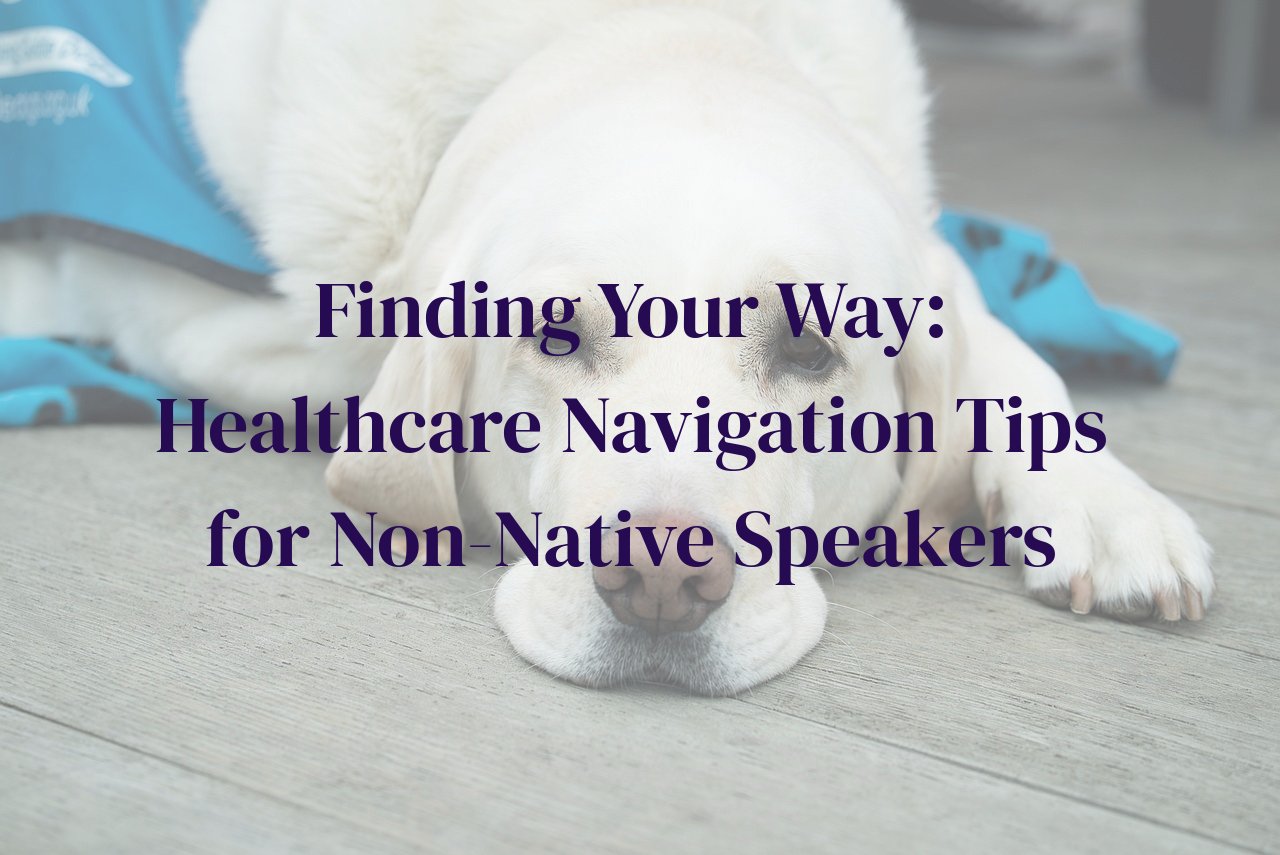
Understanding healthcare systems can be challenging, especially for non-native speakers. This post is designed to help you navigate your healthcare journey with confidence and ease.
By reading this guide, you will find practical tips and resources that can enhance your understanding of medical processes, improve communication with healthcare providers, and ensure you receive the care you need without added stress due to language barriers.
Table of Contents
Breaking Down Healthcare Terminology
One of the biggest barriers that non-native speakers face when navigating the healthcare system is the complex medical terminology. Understanding healthcare terms is critical for effective communication and ensuring that you receive the proper care. Whether it’s medical jargon, prescription instructions, or insurance lingo, breaking down these terms can significantly ease your journey.
When I first moved to a country where English wasn’t my first language, I remember feeling overwhelmed during my medical appointments. From ‘hypertension’ to ‘gastroenterology’, the words seemed endless. Over time, I began jotting down unfamiliar terms and researching their meanings. This small habit transformed my healthcare experience, making every visit less intimidating.
Let’s start with some commonly encountered terms:
Primary Care Physician (PCP): This is your main doctor who provides overall healthcare and typically refers you to specialists if needed. Think of your PCP as your healthcare manager.
Specialist: A doctor who focuses on a specific area of medicine. For example, a cardiologist specializes in heart issues. Getting to know the different types of specialists can help you understand your referrals better.
Copayment (Copay): This is a fixed amount you pay for a covered healthcare service, usually when you receive the service. For instance, you might pay a $20 copay for a doctor’s visit.
Deductible: This is the amount you pay for healthcare services before your insurance begins to pay. Understanding your deductible will give you a clearer picture of your out-of-pocket expenses.
In-network and Out-of-network: These terms refer to healthcare providers or facilities that do or do not have a contract with your insurance plan. In-network providers often cost less.
Another effective strategy is to ask your healthcare provider to clarify terms during your appointment. Don’t hesitate to ask them to explain anything that seems confusing. They are there to help you and will appreciate your efforts to understand.
For non-native speakers, it can also be useful to learn the healthcare terms in both your native language and in English. This dual understanding can facilitate smoother communication. There are numerous online resources that offer medical glossaries in multiple languages.
Additionally, consider using healthcare translation apps or carrying a medical dictionary. Many hospitals and clinics also provide interpreter services free of charge. Ask about these services when you make your appointment.
Remember, healthcare is complex for everyone, even for native speakers. Don’t be hard on yourself if certain terms are difficult to comprehend. Take it one step, one word, and one term at a time. With consistent effort, you’ll soon find that your confidence in navigating healthcare improves significantly.
Preparing for Your Medical Appointments
For many non-native speakers, navigating the labyrinthine world of healthcare can be a daunting task. I remember the first time I took my parents to a specialist in a country where we were still getting accustomed to the local language. The anxiety of potentially missing crucial information was palpable. Through that experience, I learned some invaluable tips that have since become second nature.
Firstly, make a checklist of symptoms and questions. This might sound basic, but when you’re sitting face-to-face with a healthcare professional, it’s surprisingly easy to forget things, especially when you’re grappling with a language barrier. Write down everything you’re experiencing and any questions you have, as this will help ensure you cover all your concerns during the appointment.
Another effective strategy is to bring a bilingual friend or family member. Having someone who can help translate and provide support can alleviate some of the stress. If you don’t have anyone available, many healthcare facilities offer interpreter services. Call ahead and request an interpreter to meet you at the appointment.
Sometimes, medical forms can be overwhelming. If possible, get these forms ahead of time. This way, you can take your time to review and fill them out at home, potentially seeking help from a more fluent speaker if needed. Doubly check whether the healthcare provider’s website offers translated forms in your native language.
Another tip is to learn key medical terms and phrases in the local language. Familiarize yourself with terms like ‘allergy,’ ‘medication,’ and ‘family history.’ Flashcards or mobile apps can be helpful tools for this. Small but steady learning can make a big difference over time.
Additionally, you might want to call the clinic or doctor’s office beforehand to clarify any special instructions. Sometimes you may need to fast, bring previous medical records, or arrive earlier for pre-appointment paperwork. Knowing these details in advance can facilitate a smoother experience.
Finally, don’t underestimate the power of health apps and online tools that offer translation services. Applications like Google Translate can be incredibly useful for quick translations, but ensure you validate translated medical advice with your healthcare provider as nuances in medical terminology can lead to misunderstandings.
The key is preparation and building your healthcare vocabulary over time. While it may feel overwhelming at first, remember that it’s a common hurdle many have successfully crossed. With these steps, you’re not just preparing for an appointment—you’re empowering yourself in your journey toward better health.
Effective Communication Strategies
One common challenge that non-native speakers face is effective communication with healthcare providers. It’s crucial to bridge this gap to ensure you get the best possible care.
Learn Basic Medical Vocabulary: It can be immensely helpful to familiarize yourself with common medical terms and phrases in the local language. This doesn’t mean you need to become fluent, but knowing words related to your symptoms and conditions can help. For instance, understanding basic terms like ‘pain’, ‘fever’, ‘allergy’, and ‘medication’ can make a huge difference.
Use Visual Aids: A picture can be worth a thousand words, especially when dealing with medical concerns. Illustrations or diagrams of body parts, symptoms, or medical conditions can help convey your concerns to healthcare providers more clearly.
Take Advantage of Translation Apps and Tools: Nowadays, technology offers a range of tools to aid communication. Apps like Google Translate or dedicated medical translation apps can translate text and even spoken language in real-time, making it easier to discuss complex medical issues.
Request an Interpreter: Many healthcare facilities offer interpreter services for non-native speakers. Don’t hesitate to request one. Having an interpreter present can significantly reduce misunderstandings and ensure that you and your healthcare provider are on the same page.
Write Down Your Symptoms and Questions: Before your appointment, jot down your symptoms, medical history, and any questions you might have. This organized approach can help you communicate more effectively. It can also serve as a handy checklist during your visit, ensuring you don’t forget anything important.
Practice Active Listening: Communication is a two-way street. Make a conscious effort to listen carefully to what your healthcare provider says. Don’t be afraid to ask them to repeat or clarify information if you don’t understand something. Using phrases like ‘Can you please explain that again?’ or ‘I’m not sure I understand; can you provide more details?’ can be very helpful.
Bring a Bilingual Friend or Family Member: If you have a friend or family member who is bilingual, consider bringing them to your appointment. Their presence can provide extra support and help ensure that nothing gets lost in translation.
Use Simple Language: When describing your symptoms or asking questions, try to use simple, straightforward language rather than medical jargon or complex phrases. This can prevent confusion and make it easier for healthcare providers to understand your concerns.
By incorporating these strategies, you can navigate the often complicated healthcare system more effectively and ensure that your voice is heard, regardless of any language barriers. Remember, your health is important, and clear communication is key to getting the care you need.
Understanding Your Patient Rights
When you’re navigating healthcare as a non-native speaker, understanding your patient rights is crucial for ensuring a positive healthcare experience. Personal understanding of these rights can significantly bolster your confidence and empower you to advocate for yourself effectively. Believe me, it makes all the difference.
The Right to Informed Consent: One of the fundamental rights is the right to be fully informed about your treatment options. This means that healthcare professionals should thoroughly explain your diagnosis, the proposed treatments, and any potential risks and benefits. They should also answer any questions you have to ensure you make an informed decision. In my experience, I found it immensely helpful to ask for written materials or translations in my native language whenever possible.
Confidentiality and Privacy: You have the right to expect confidentiality concerning your medical records and treatment. This means that your personal health information should not be shared with anyone without your explicit consent. I remember feeling reassured knowing that my health history was protected, especially in a foreign country where I felt vulnerable.
The Right to Respectful and Non-Discriminatory Care: Regardless of your language skills, cultural background, or nationality, you are entitled to kindness, respect, and non-discriminatory treatment. Healthcare providers are legally obligated to treat you with dignity. I have found that asserting this right politely but firmly can help in fostering a more respectful interaction with the medical staff.
The Right to a Second Opinion: Never feel rushed into making a medical decision. If you are uncertain about the advice or treatment given, you have the right to seek a second opinion. This can be particularly valuable if language barriers make it difficult to fully understand the recommendations you are receiving. On my journey, seeking a second opinion has often provided me with new insights and reassurance.
Access to Language Assistance Services: Many healthcare facilities offer translation and interpretation services to help non-native speakers. You are entitled to request for these services, whether in person or via phone or video. Utilizing these services has profoundly improved my communication with healthcare providers, making it easier to comprehend and be comprehended during medical consultations.
By understanding and exercising these patient rights, you can significantly enhance your healthcare experience. Every step you take to assert your rights contributes to a more empowered and confident approach to managing your health. Remember, being informed is the first step towards better health outcomes.
Resources and Support for Non-Native Speakers
As a non-native speaker navigating the complex landscape of healthcare, it can often feel like you’re alone on an island. But fear not—there are a plethora of resources designed to support you in making your journey smoother. After living in a country where my native language wasn’t spoken, I quickly realized the importance of tapping into community resources, language services, and digital tools.
Firstly, most hospitals and clinics offer Interpreter Services. These services provide professional interpreters who can assist during medical appointments, ensuring that both you and your healthcare provider fully understand each other. My first experience with an interpreter made me feel heard and reassured, as medical jargon can be challenging even in one’s native language.
Another invaluable resource is Translated Medical Documents. Many healthcare facilities provide essential documents—like consent forms, medical history forms, and aftercare instructions—translated into multiple languages. It’s always a good idea to request these documents in advance to help you prepare better, reducing the stress of deciphering complex terms on the spot.
Don’t forget about Community Health Organizations. These organizations often offer programs tailored specifically for non-native speakers, including workshops on how to navigate the healthcare system, educational seminars on chronic disease management, and multilingual hotlines for immediate support. Volunteering at one of these organizations connected me with a robust network and priceless information.
Also, the rise of Digital Health Tools can’t be overstated. There are numerous apps designed for non-native speakers that provide real-time translation services, symptom checkers, and even direct access to healthcare professionals. Utilizing these digital tools can help bridge communication gaps and offer peace of mind.
Moreover, Cultural Liaisons often play a pivotal role. These individuals understand both the medical landscape and the cultural nuances of non-native speakers, ensuring that cultural stigmas or taboos don’t hinder effective healthcare. I remember meeting a cultural liaison who not only translated but also contextualized information, making it contextually relevant.
Last but certainly not least, consider joining Support Groups. Many hospitals and community centers host support groups facilitated in various languages, where people can share their experiences and offer each other guidance and moral support. Being part of a community where people understood my struggles was incredibly validating and empowering.
In conclusion, while the task of navigating healthcare as a non-native speaker can be daunting, utilizing these resources can provide invaluable support and peace of mind. The key is proactive engagement—take that first step, and you’ll find a wealth of options designed to help you feel more at home in your healthcare journey.
Conclusion
Navigating healthcare as a non-native speaker doesn’t have to be intimidating. By equipping yourself with the right knowledge and resources, you can ensure a smoother, more effective healthcare experience.
Remember, it’s your right to receive the best care possible, regardless of the language you speak. I hope this guide has provided valuable insights to help you on your healthcare journey.



